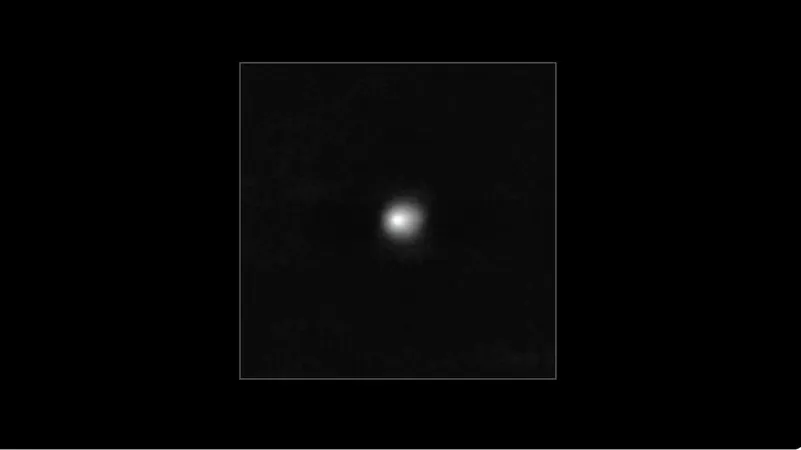
Groundbreaking Simulations Reveal Secrets of Icy Moons with Hidden Oceans!
2024-10-31
Author: Rajesh
Recent Research on Icy Moons
Recent research has unveiled compelling evidence suggesting the presence of internal oceans beneath the icy surfaces of celestial bodies like Europa and Enceladus. These moons have been identified as having vapor plumes, which strengthen the hypothesis that liquid water exists under their thick layers of ice. But what does this mean for the potential origins of life beyond Earth?
Significance of Liquid Water
The significance of liquid water cannot be overstated, as it is a fundamental ingredient for life as we know it. Consequently, understanding how these internal oceans develop—including their temperature distribution and evolutionary processes—is crucial for astrobiology. Researchers believe that the intricate balance between tidal heating, caused by gravitational interactions, and radiative cooling is key to maintaining these liquid water pockets beneath the moons’ icy exteriors.
Simulating Tidal Heating Effects
In a recent study, scientists set out to simulate the tidal heating effects on an internal ocean of an icy moon using sophisticated 3-dimensional numerical fluid calculations based on the Smoothed Particle Hydrodynamics (SPH) method. This cutting-edge approach allowed them to model fluid dynamics in a way that accounts for varying physical properties throughout the ocean.
Challenges in Research
The researchers encountered several challenges while exploring these simulations. First, traditional viscosity formulations generated unrealistic forces that impeded the moon's rotation. Secondly, standard SPH techniques caused artificial energy partitioning, affecting the layered structure of the ice and ocean.
Overcoming Technical Hurdles
To overcome these technical hurdles, the research team made significant modifications. They adjusted the viscosity models and implemented Density Independent SPH (DISPH) to enhance performance at interfaces where abrupt changes occur. Additionally, they incorporated a new algorithm for radiative cooling, facilitating better modeling of fluid surfaces. They even adopted an equation of state that considers phase transitions, refining the SPH method further to encapsulate all necessary physical variables.
Implications of Enhanced Simulations
With these enhancements, the simulations are now better equipped to portray the evolution of icy moons that may harbor internal oceans—bringing humanity closer to understanding extraterrestrial environments that might support life.
Future Research Directions
This pioneering study contributes to our growing knowledge of potentially habitable places within our solar system and emphasizes the need for future missions to explore these enigmatic moons. Could Europa and Enceladus be more than just icy worlds? The scientific community eagerly awaits answers to these profound questions!
Conclusion
Stay tuned as we continue to follow breakthroughs in astrobiology and the search for life beyond Earth!



 Brasil (PT)
Brasil (PT)
 Canada (EN)
Canada (EN)
 Chile (ES)
Chile (ES)
 Česko (CS)
Česko (CS)
 대한민국 (KO)
대한민국 (KO)
 España (ES)
España (ES)
 France (FR)
France (FR)
 Hong Kong (EN)
Hong Kong (EN)
 Italia (IT)
Italia (IT)
 日本 (JA)
日本 (JA)
 Magyarország (HU)
Magyarország (HU)
 Norge (NO)
Norge (NO)
 Polska (PL)
Polska (PL)
 Schweiz (DE)
Schweiz (DE)
 Singapore (EN)
Singapore (EN)
 Sverige (SV)
Sverige (SV)
 Suomi (FI)
Suomi (FI)
 Türkiye (TR)
Türkiye (TR)
 الإمارات العربية المتحدة (AR)
الإمارات العربية المتحدة (AR)